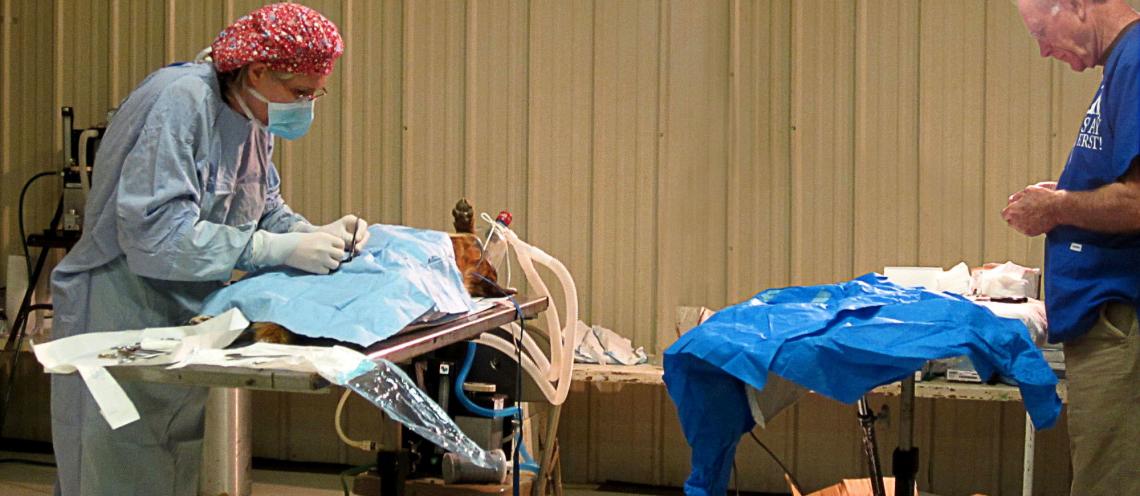
The Overpopulation Problem
Tuesday, January 12, 2016
They are street dogs— more than 350 million unwanted dogs worldwide with an estimated 75 percent of them receiving no veterinary care during their lifetime, allbeit a short one (3.4 years for males; 2.4 years for females). In 2015, some of these dogs were part of a research program designed to stop unwanted pregnancies in dogs. Helping with the project are Billy Clay, DVM (OSU ’70), principal investigator; Kim Carter, DVM (OSU ’89), clinical assistant professor at Oklahoma State University’s Veterinary Medical Hospital; Chuck Helwig, DVM, founding board member of Spay FIRST; and Ruth Steinberger, co-COO of Spay FIRST.
“I am working with Spay FIRST and the National Wildlife Research Center in Fort Collins, Colorado,” explained Clay. “The Center is part of the USDA APHIS Wildlife Services (USDA). Their fertility control research project developed a GnRH vaccine called GonaCon® for horses. We have been working with them on a modification of the vaccine for control of estrous (heat cycle) in dogs. The intent is to develop a contraceptive vaccine that could be given to feral dogs on Native American reservations and international poverty stricken locations. We are currently testing various formulations of the vaccine in a more controlled environment managed by Spay FIRST.”
In 2014 team members from Spay FIRST including Kay Helms (OSU ’72) and the USDA initiated a GnRH vaccine trial at the Fort Peck Reservation in Poplar, Montana. In 2015 Drs. Clay and Carter made a follow up visit to Fort Peck.
“I know Ruth through the shelter medicine program we have at OSU’s Veterinary Medical Hospital,” said Carter. “We work with Spay FIRST to spay and neuter shelter animals before they are adopted to help with pet overpopulation. She recruited me for the Montana program because veterinarians are scarce in that area. Because we were on a reservation, we didn’t have to worry about out-of-state licensure. I just needed to be a licensened veterinarian who can perform high quality, high volume surgeries.
“We basically set up a ‘MASH’ style clinic in a borrowed building where we brought in all the supplies. We pulled blood samples on the dogs to test if the concentration of the vaccine was working. In the blood sample, we are looking for antibodies. The antiGnRH is a gondaltropal regulating hormone which means it helps control the estrus cycle so the females will not come into heat if they have received the vaccine. However, because this is a clinical trial, we then spayed the females and neutered any males because at this point, surgical sterilization is the only method that is 100 percent proven.”
Carter says Spay FIRST is doing a great job working to reduce pet overpopulation.
Pictured above, Drs. Kim Carter (left) and Billy CLay (right) work in a MASH style clinic to help lower pet overpopulation in Montana.
“The OSU Shelter Medicine Program works with approximately 22 shelters throughout Oklahoma, including Spay FIRST, spaying and neutering shelter dogs and cats before they are adopted,” added Carter. “The surgeries give our veterinary students an opportunity to hone their surgical skills while under the tutelage of a trained clinical faculty member. The animal shelters have dogs and cats that are ready for adoption that are not able to contribute to the pet overpopulation problem we see world-wide. It’s a win-win situation for everyone.”
For more information on Spay FIRST, visit www.spayfirst.org. For information on the veterinary medicine program at Oklahoma State University, visit www.cvhs.okstate.edu.
